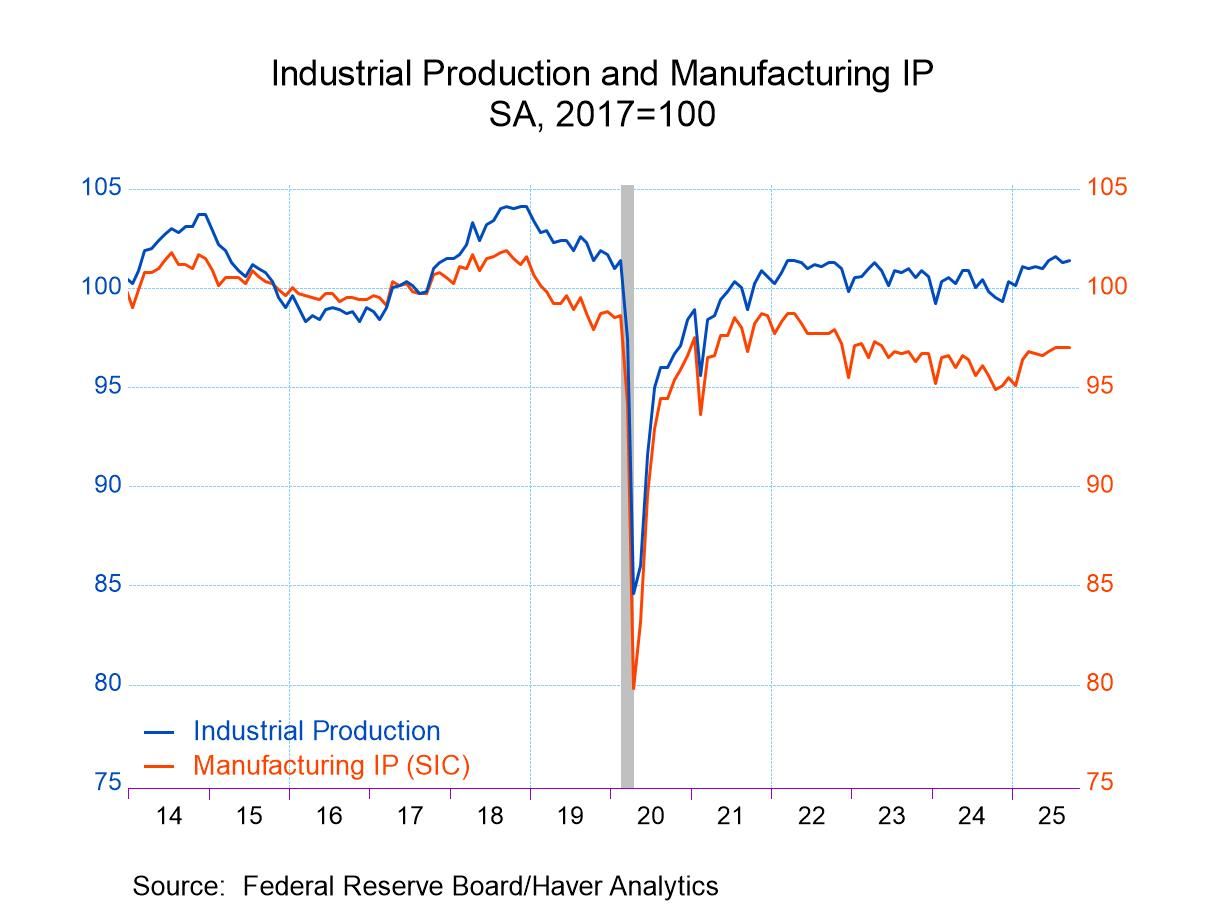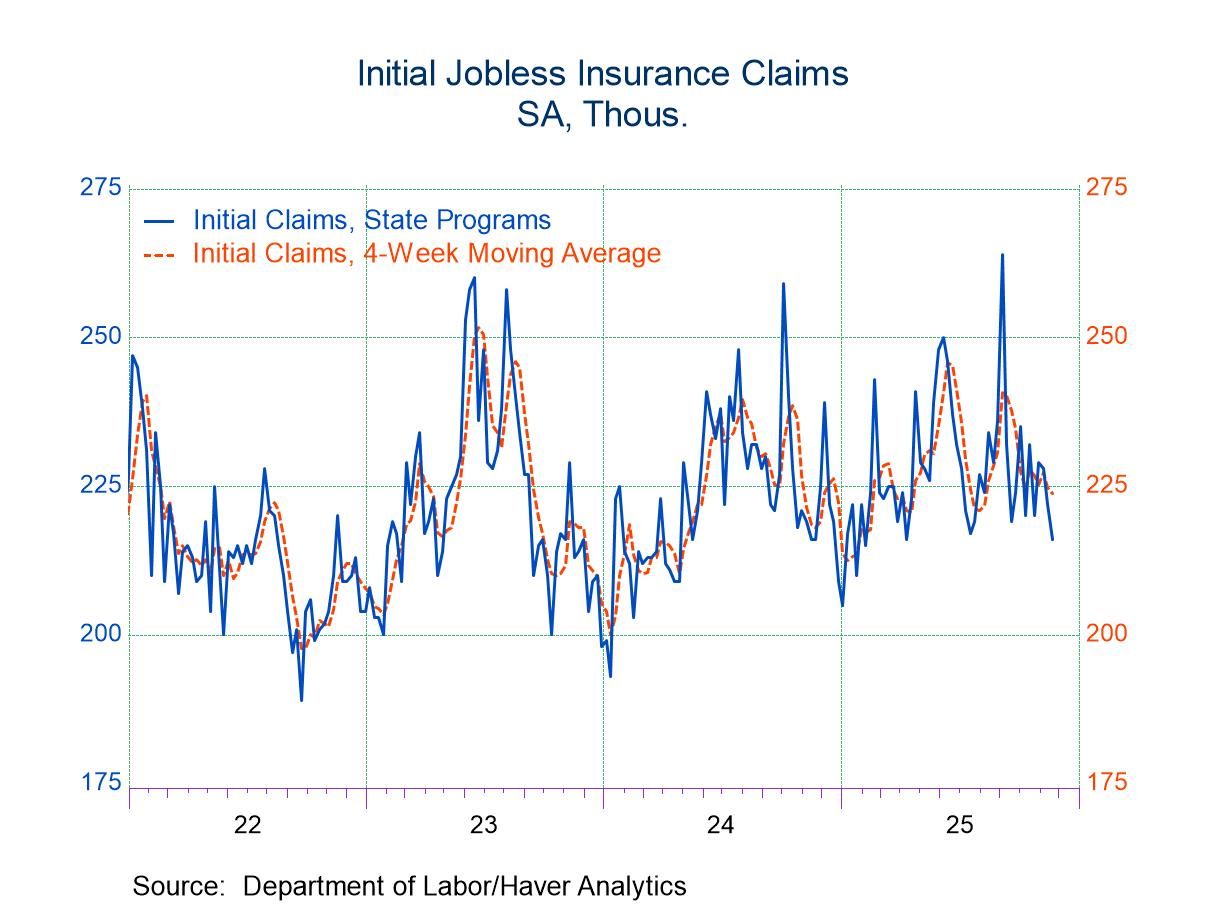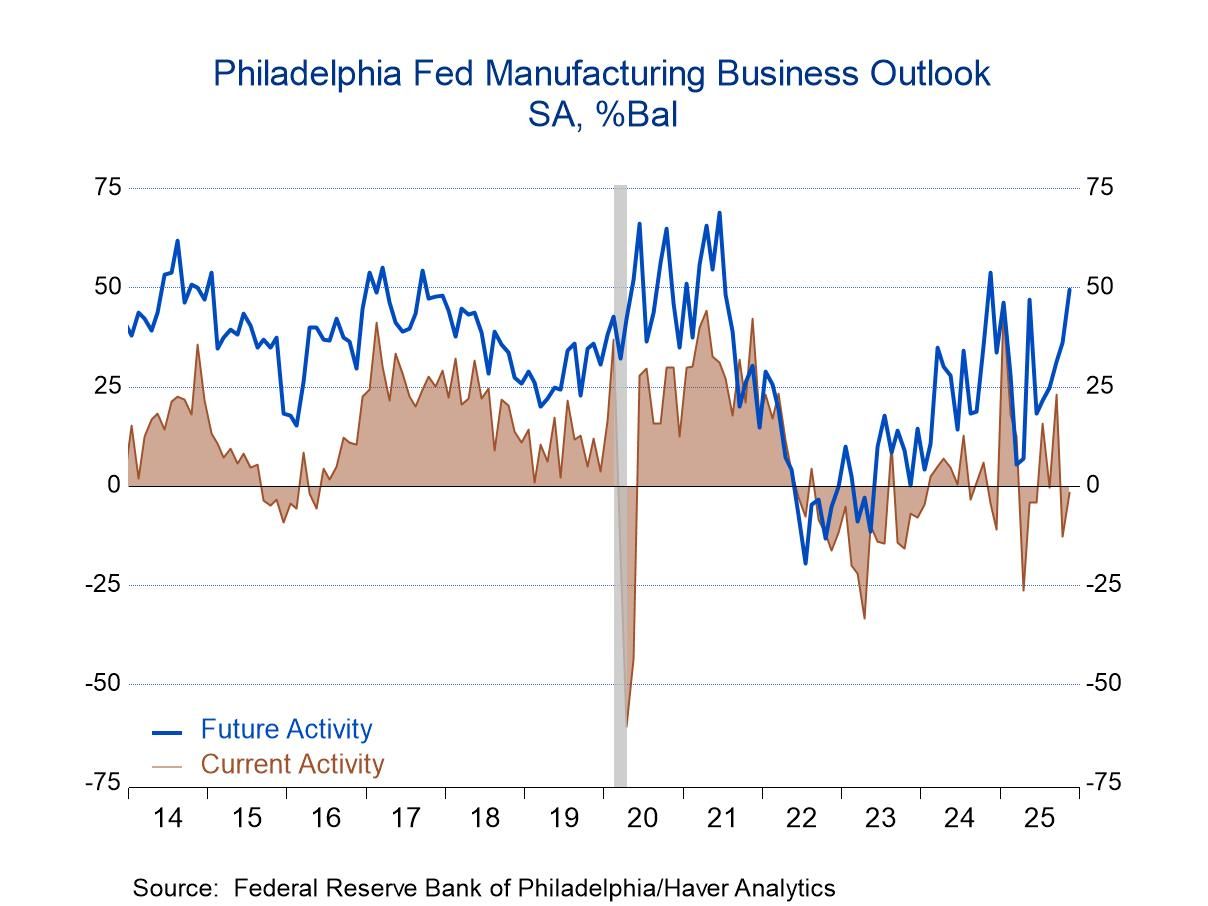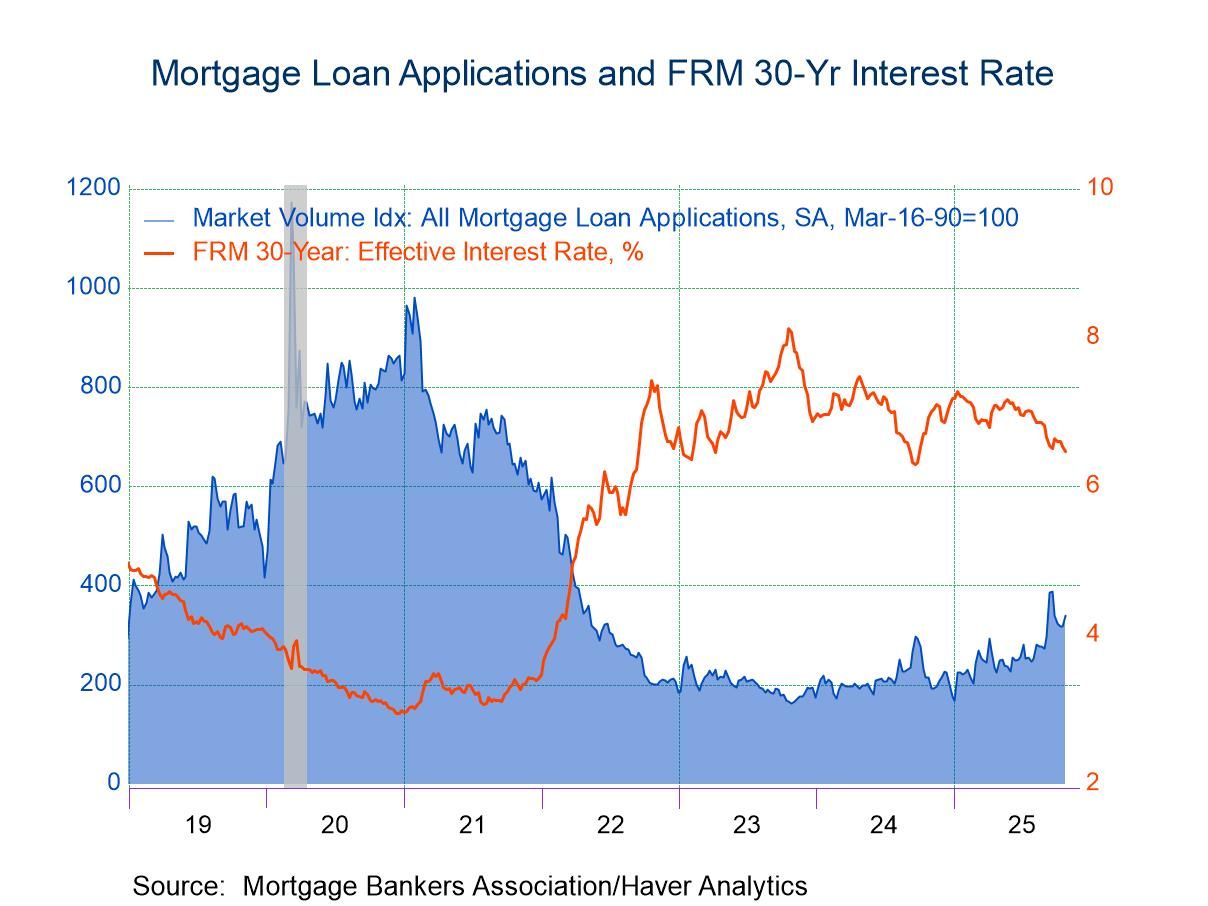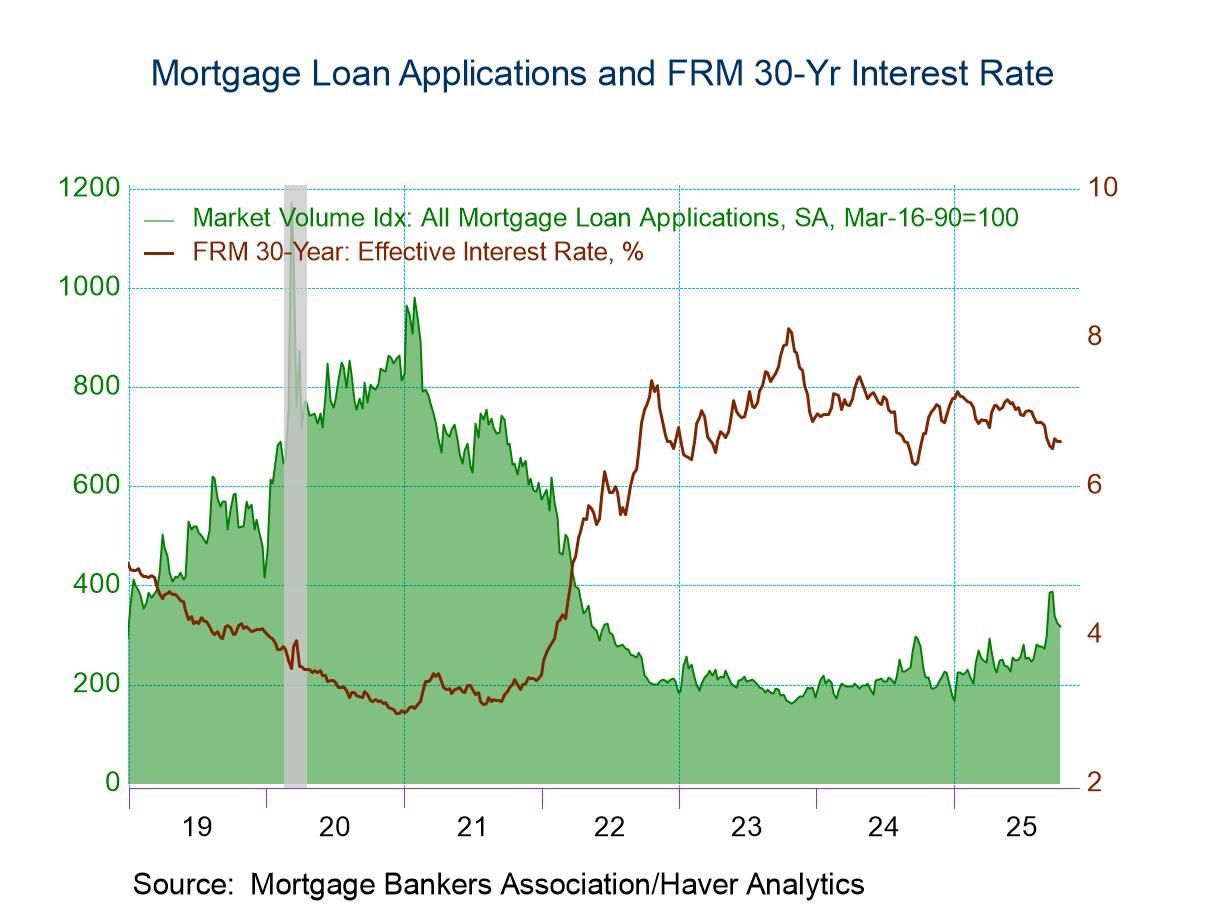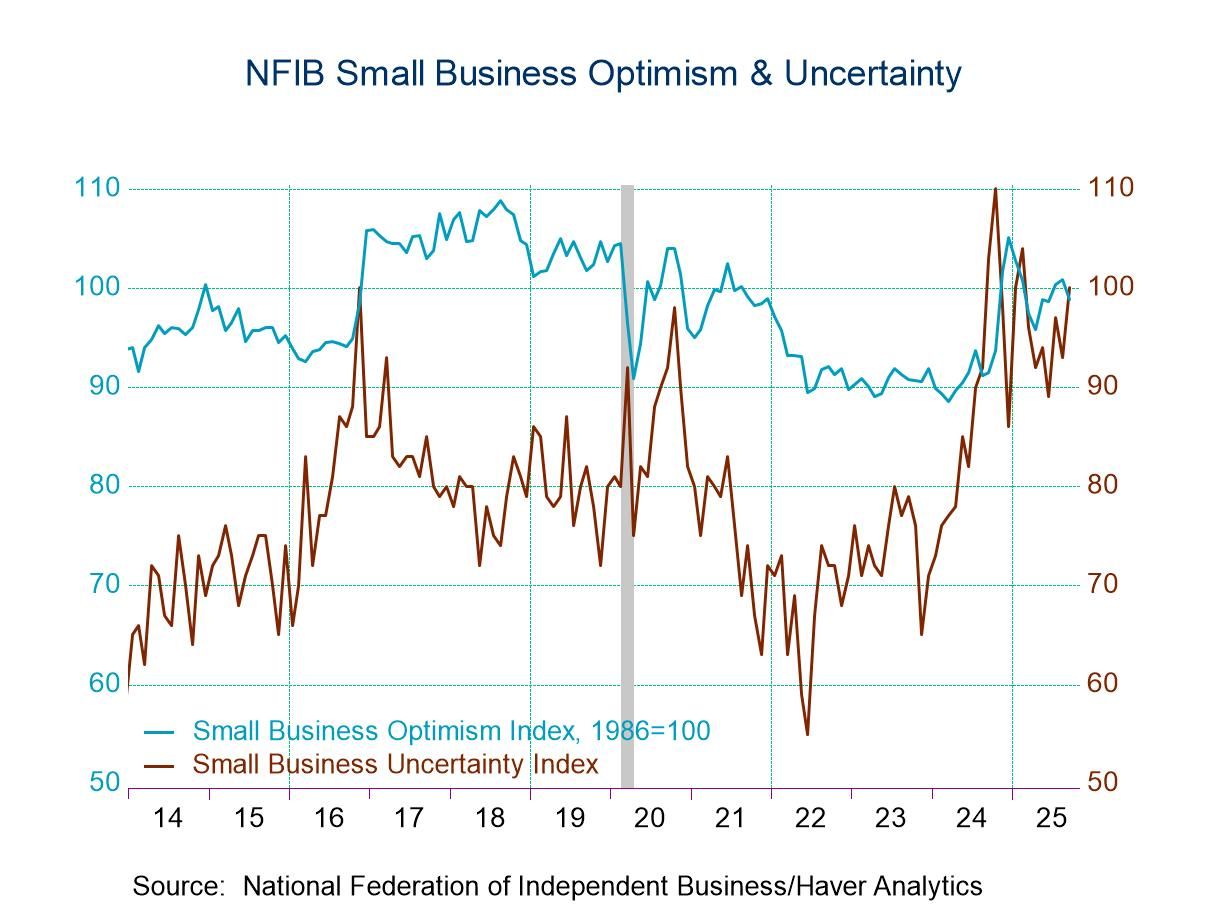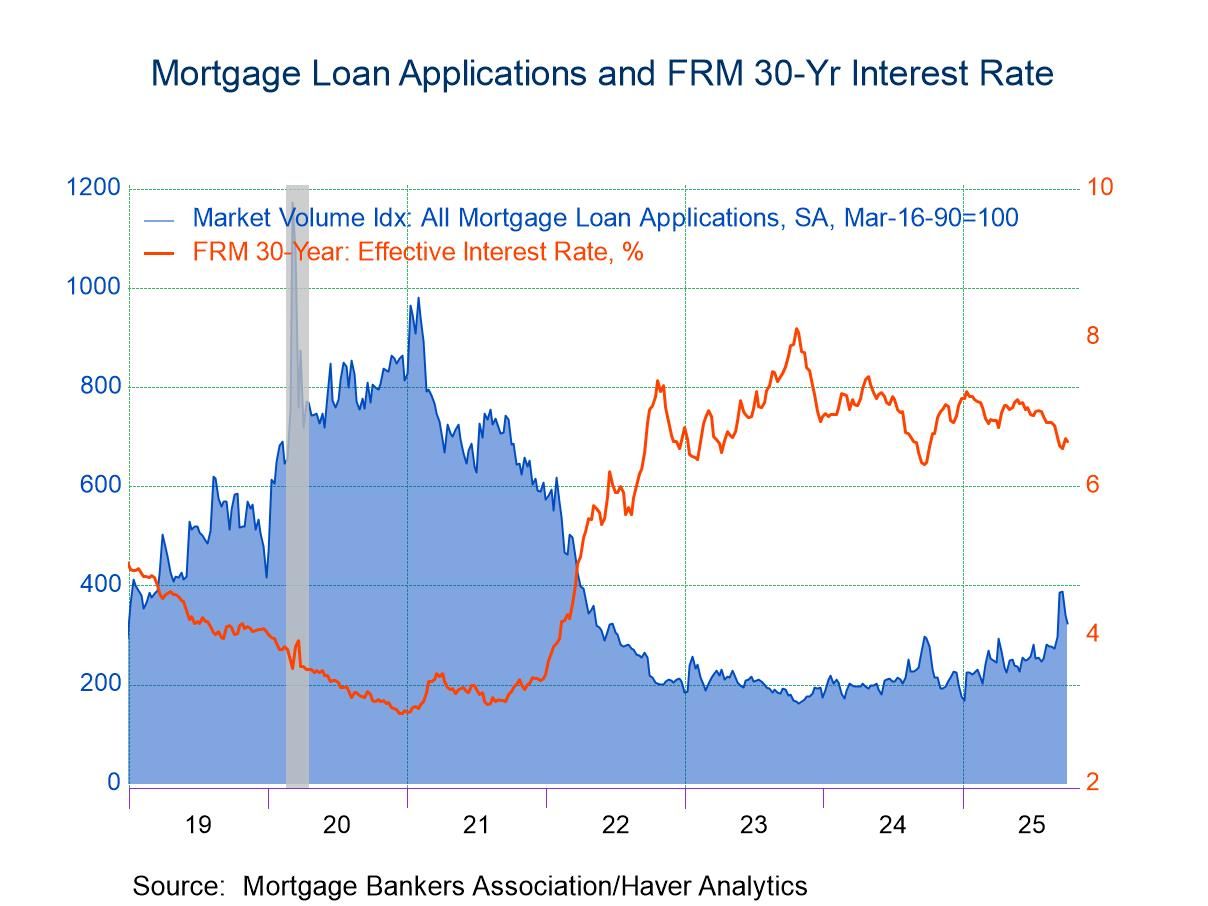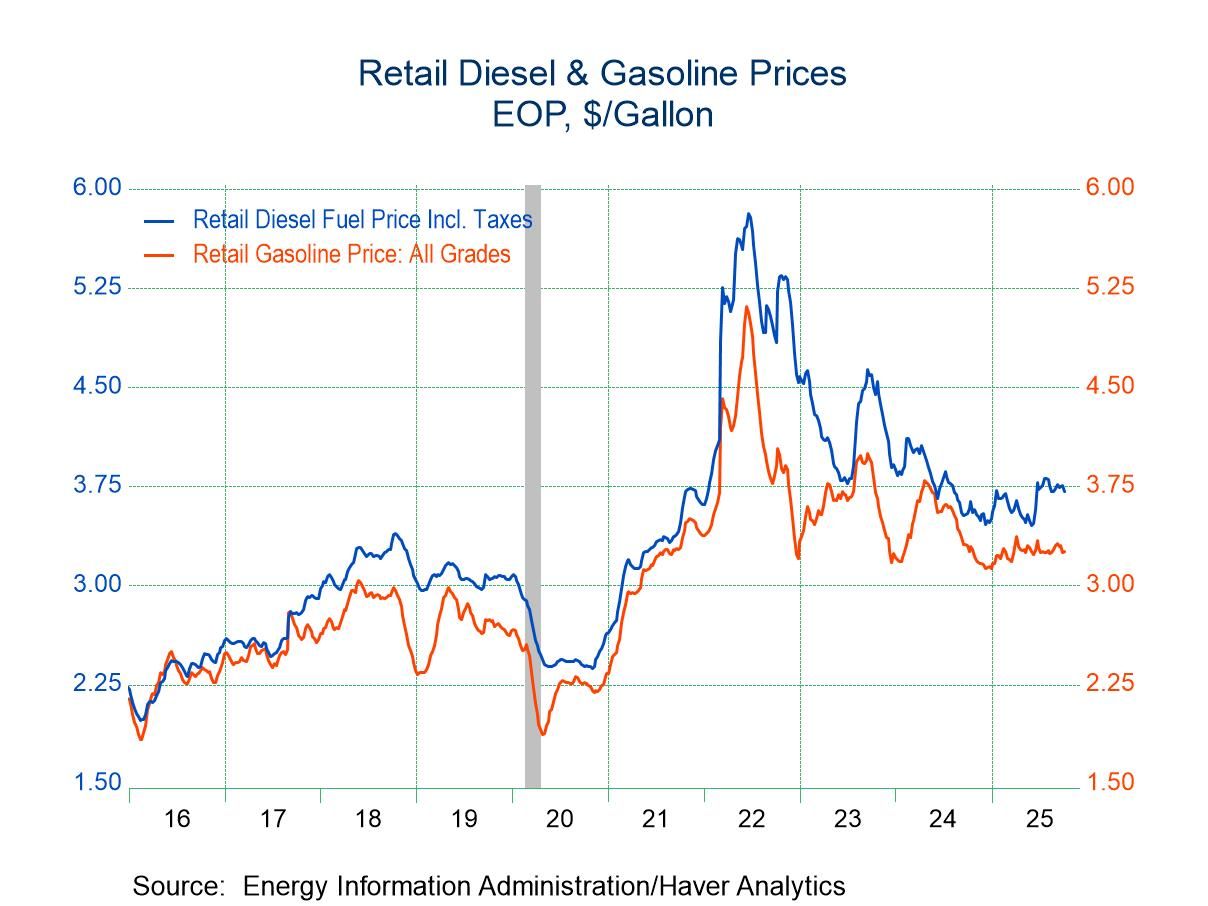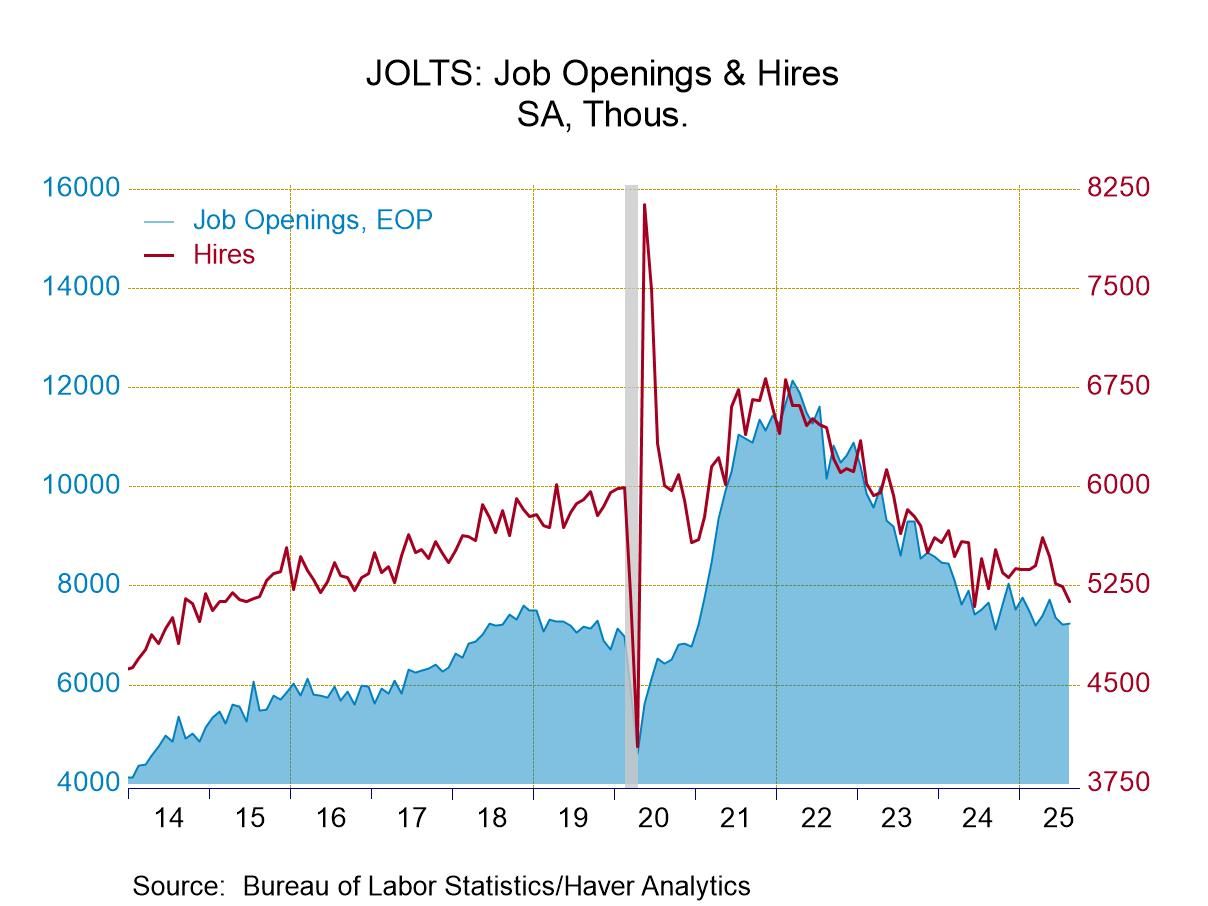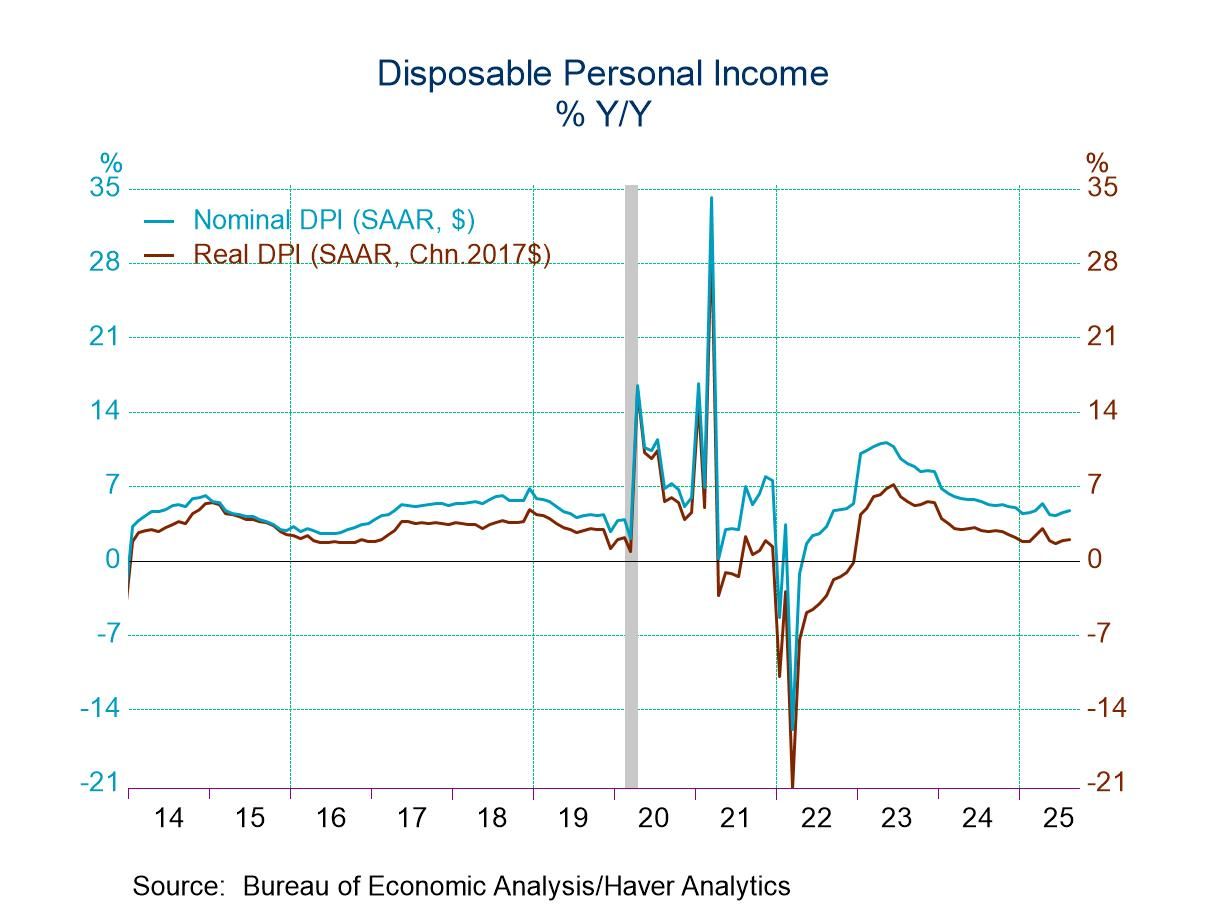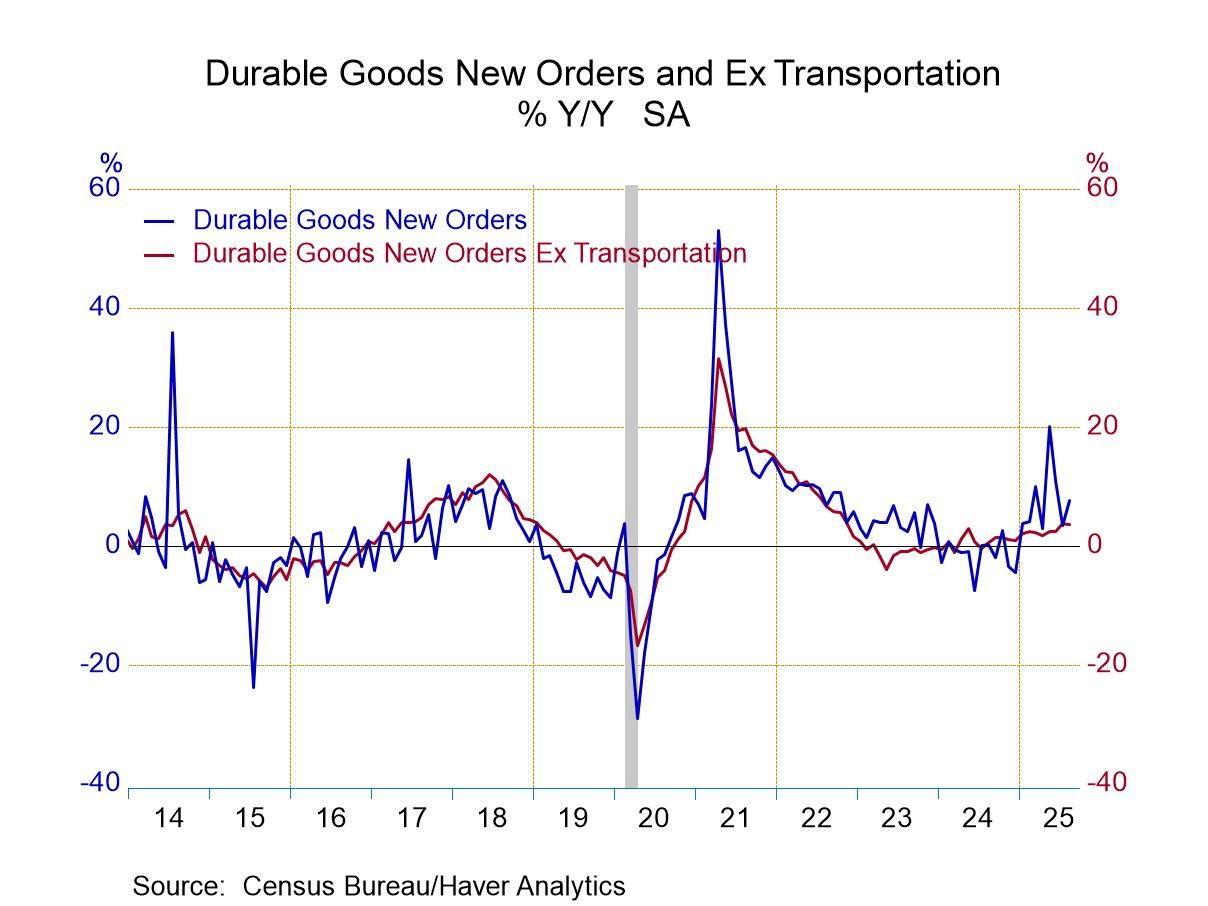- IP edged up 0.1% m/m in September with a downward revision to August.
- Manufacturing and mining production were unchanged.
- Utilities output rebounded 1.1% m/m.
- Capacity utilization unchanged.
Introducing
Sandy Batten
in:Our Authors
Sandy Batten has more than 30 years of experience analyzing industrial economies and financial markets and a wide range of experience across the financial services sector, government, and academia. Before joining Haver Analytics, Sandy was a Vice President and Senior Economist at Citibank; Senior Credit Market Analyst at CDC Investment Management, Managing Director at Bear Stearns, and Executive Director at JPMorgan. In 2008, Sandy was named the most accurate US forecaster by the National Association for Business Economics. He is a member of the New York Forecasters Club, NABE, and the American Economic Association. Prior to his time in the financial services sector, Sandy was a Research Officer at the Federal Reserve Bank of St. Louis, Senior Staff Economist on the President’s Council of Economic Advisors, Deputy Assistant Secretary for Economic Policy at the US Treasury, and Economist at the International Monetary Fund. Sandy has taught economics at St. Louis University, Denison University, and Muskingun College. He has published numerous peer-reviewed articles in a wide range of academic publications. He has a B.A. in economics from the University of Richmond and a M.A. and Ph.D. in economics from The Ohio State University.

Publications by Sandy Batten
- USA| Dec 03 2025
U.S. Industrial Production Edged Up in September
by:Sandy Batten
|in:Economy in Brief
- USA| Nov 26 2025
U.S. Initial Unemployment Insurance Claims Fell in Latest Week
- Initial unemployment claims fell to 216,000, the lowest weekly figure since April.
- Continued claims edged up to 1.96 million, indicating that the unemployed are still having increasing difficulty finding a job.
by:Sandy Batten
|in:Economy in Brief
- The headline index increased to -1.7 in November from -12.8 in October. So, while activity fell further, the pace of decline slowed.
- Both new orders and shipments fell into negative territory in November after posting positive readings in October.
- Delivery times slowed and the pace of input price increases rose.
- Employment increased while the rise in the workweek slowed.
by:Sandy Batten
|in:Economy in Brief
- USA| Nov 19 2025
U.S. Trade Deficit Narrowed in August
- Release delayed by the more than one-month federal government shutdown.
- The trade deficit narrowed to $59.6 billion in August from $78.2 billion in July.
- Exports were little changed with a 4% jump in capital goods exports offset by declines in most other major categories.
- Imports fell 5.1% m/m, reflecting a $9 billion monthly decline in nonmonetary gold imports.
- The services surplus edged up in August.
by:Sandy Batten
|in:Economy in Brief
- USA| Oct 29 2025
U.S. Mortgage Applications Rebounded on Further Decline in Rates
- Applications increased 7.1% w/w, their first weekly gain in five weeks.
- Both applications for purchase and for refinancing rose.
- Fixed mortgage interest rates continued their general downtrend.
by:Sandy Batten
|in:Economy in Brief
- USA| Oct 15 2025
U.S. Mortgage Applications Continued to Fall in Latest Week
- Mortgage applications fell 1.8% w/w in the week ended October 10, the third consecutive weekly decline.
- Applications are on a modest uptrend but are still correcting from the outsize jump in mid-September.
- Fixed mortgage rates were mixed with the 15-year rate down slightly and the 30-year rate unchanged.
by:Sandy Batten
|in:Economy in Brief
- USA| Oct 14 2025
U.S. Small Business Optimism Fell in September
- First decline in three months.
- Uncertainty rose to the fourth highest levels in series history,
- Percentage expecting economy to improve fell for the third time in the past four months.
- Percentage reporting supply chain disruptions jumped 10 points in September.
- This survey was conducted in September. Whatever impact the federal government shutdown will have will appear in the October survey.
by:Sandy Batten
|in:Economy in Brief
- USA| Oct 08 2025
U.S. Mortgage Applications Fell in Latest Week
- Mortgage applications fell 4.7% w/w in the week ended October 3.
- Applications are on a modest uptrend but are still correcting from the outsize jump in mid-September.
- Fixed mortgage rates were mixed with the 15-year rate up a bit and the 30-year rate down slightly.
by:Sandy Batten
|in:Economy in Brief
- USA| Oct 07 2025
U.S. Retail Gasoline Prices Unchanged as WTI Price Falls
- Retail gasoline prices unchanged in latest week.
- The price of WTI fell to $61.79, its lowest since the week of May 30.
- The price of natural gas rose 26 cents to $3.16, the highest since July 25.
by:Sandy Batten
|in:Economy in Brief
- USA| Sep 30 2025
U.S. JOLTS—Openings Edged Up, Hiring and Layoffs Fell in August
- Job openings edged up 0.3% m/m in August after declining in both June and July.
- Openings were less than the number of unemployed for the second consecutive month.
- Hiring declined 2.2% m/m in August, the fourth consecutive monthly decline.
- Total separations fell 2.1% m/m, reflecting declines in both quits and layoffs.
by:Sandy Batten
|in:Economy in Brief
- Personal income increased 0.4% m/m but compensation slowed.
- Real PCE increased 0.3% m/m in August on top of a 0.4% m/m increase in July.
- July/August real PCE up 2.8% annualized from Q2 average, providing a solid base for Q3 GDP growth.
- Headline PCE inflation edged up further to the fastest y/y pace since February.
by:Sandy Batten
|in:Economy in Brief
- USA| Sep 25 2025
U.S. Advance Durable Goods Orders Unexpectedly Rose in August
- Durable goods orders unexpectedly rose 2.9% m/m after declines in both June and July.
- Aircraft orders rose 27% m/m, their first increase in three months.
- Orders excluding transportation rose 0.4% m/m in August on top of a solid 1.0% monthly gain in July.
- Core capital goods orders increased 0.6% following a 0.8% rise in July; shipments fell 0.3% m/m, their first decline in four months.
by:Sandy Batten
|in:Economy in Brief
- of56Go to 1 page


